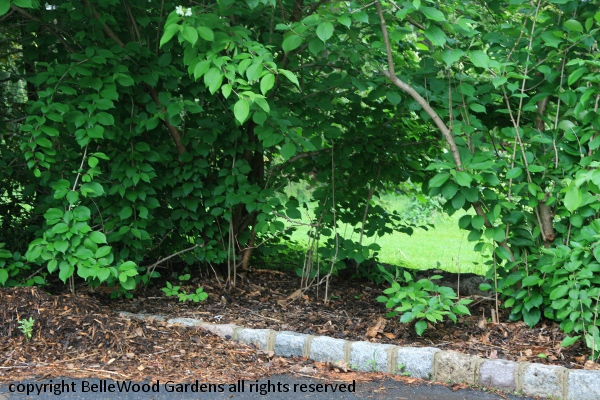 . . . .
. . . . 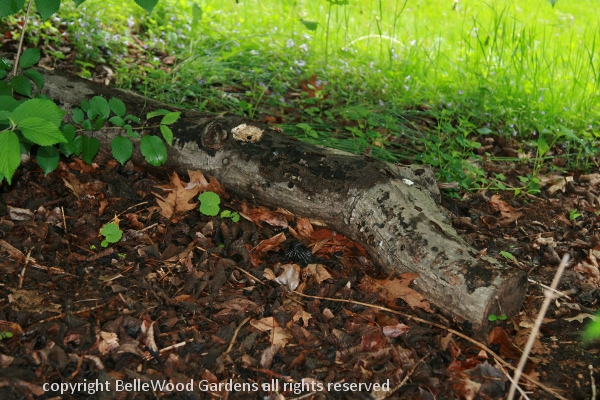
Saturday, 11 May & Sunday, 12 May 2013
Propagating Shiitake Mushrooms
I was qvetching to Patricia, education coordinator for the New Jersey Mycological Society about the number of mature red oak trees, Quercus rubra, that were toppled in last October's Superstorm Sandy. Firewood for several years to come, but I'd rather have the living trees. She looked at me rather blankly and said, "Why don't you grow mushrooms? We're having a workshop in May." Granted the balance remains tipped on the firewood side but especially after my visit to Phillips Mushroom Farm the ability to grow my own mushrooms is fantastic. It's my silver lining.
I registered, sent in my check, and when the day arrived off I drove to the workshop venue where AJ of the South Jersey Mycological Supply company would explain how to cultivate shiitake mushrooms, then walk us through the process of inoculating logs to take home.
 . . . .
. . . . 
Here's a log lurking under some bushes at the bottom of a driveway. It's shady, it's damp, it's convenient to the house.
These are all good things if you want to cultivate mushrooms.
Red oak, AJ told our class of about 8 students, is suitable for many kinds of mushrooms. It should be cut in the fall and inoculated in the Spring. Wood dry enough to burn is too dry for mushrooms. The logs should be a minimum of 3" in diameter or larger. Once inoculated it needs to be kept outdoors in a shady place protected from the sun and where it is exposed to the rain. AJ suggests that the log should not be in direct contact with the soil but propped up just a little. Rocks are good supports. While other mushrooms can be cultivated on logs AJ saves logs for shiitakes because they prefer it. If oyster mushrooms, for example, will happily grow on straw or paper or coffee grounds, why use logs for them.
In nature, a spore lands on a suitable substrate. Mycelia grow, colonize the substrate and breaks it down. A trigger - rainfall, lightening strike - the fruiting body (what we know as a mushroom) forms, releases spores, and the cycle begins again. What we'll do shortcuts the process and ensures that the mushroom we want to grow is the one that does.
To produce the spawn that inoculates the log is a painstaking process. Sterility is important for the early stages, and AJ uses a large pressure canner and a laminar flow hood to ensure that the mushroom spawn that's wanted is the one that ends up growing. He buys a syringe of mushroom culture, which he grows on agar-filled petri dishes. The next stage will see mycilia transferred to pasturized / sterilized grain, wheat in this case I believe. From there it will be cultured on pastured wooden plugs. And it is these plugs that will inoculate the logs.
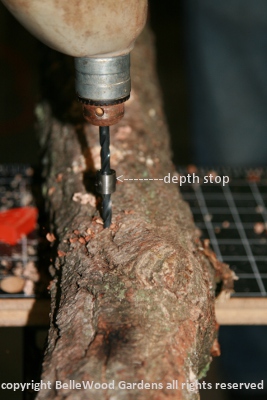 . . . . . . . . .
. . . . . . . . . 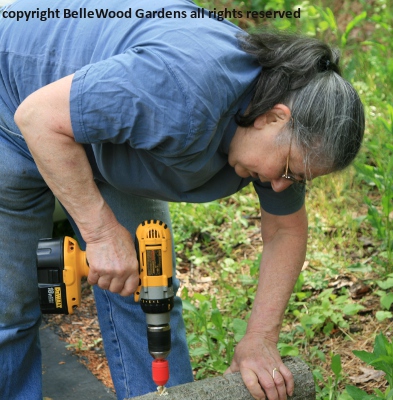
Step one: drill plug-size holes in the logs. Each 3 foot long log will get 30 plugs. There's a depth stop on the drill bit
so the holes are just deep enough and not too deep. It does fairly quickly. This part is easy, as are the next few steps.
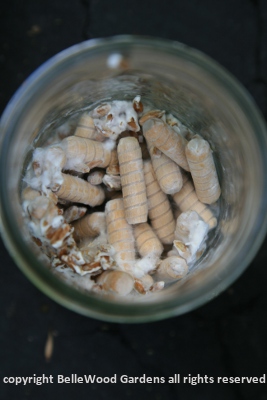
I was so enthusiastic about the project that I bought extra plugs
to inoculate another couple of branches at home. Here you can see
a jar with the plugs, and grain just covered with the white mycelia.
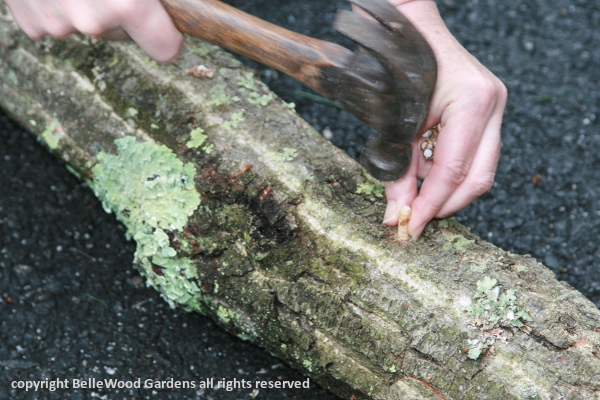
The plugs are gently tapped into place with a hammer. I found it easier to drill a row of 6 or 8 holes
in the length of my 3 foot long log, then tap in the plugs. Turn the log partway around, drill a row
and set the plugs, etcetera. Drill all the holes first and it was easy to overlook a couple of them.
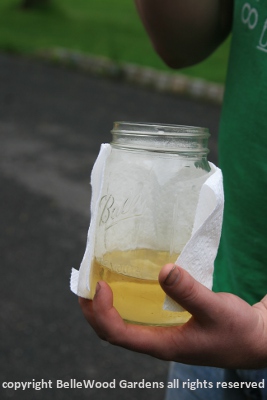 . . . .
. . . . 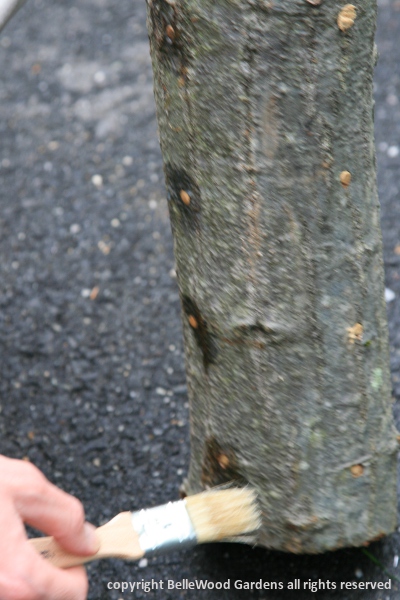 . . . .
. . . . 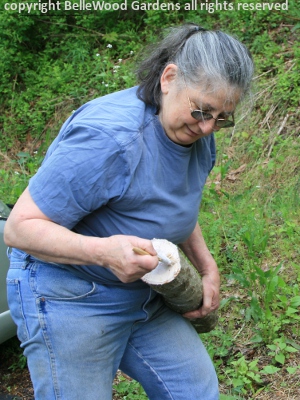
Lastly the plugs and the ends of the log need to be sealed with wax. AJ brought soy wax for us to use. I get ugly candles on Freecycle to make fire lighters,
also just fine. The wax helps to keep the log and the plugs from drying out. However in dry weather it's still very important to water the log and keep it damp.

AJ, pondering one of the numerous questions his enthusiastic students kept asking.
Enthusiastic is the right word. Several people drilled and filled an additional log
to take home. But now we must be patient, as it is next year before we'll harvest.
So come back next Spring for an update on my silver lining adventure on cultivating shiitake mushrooms.